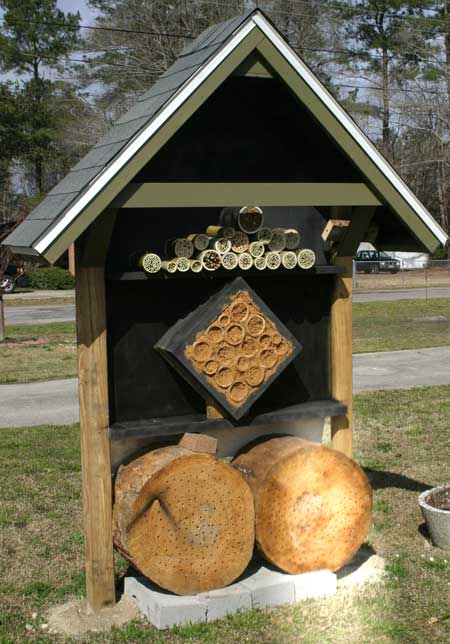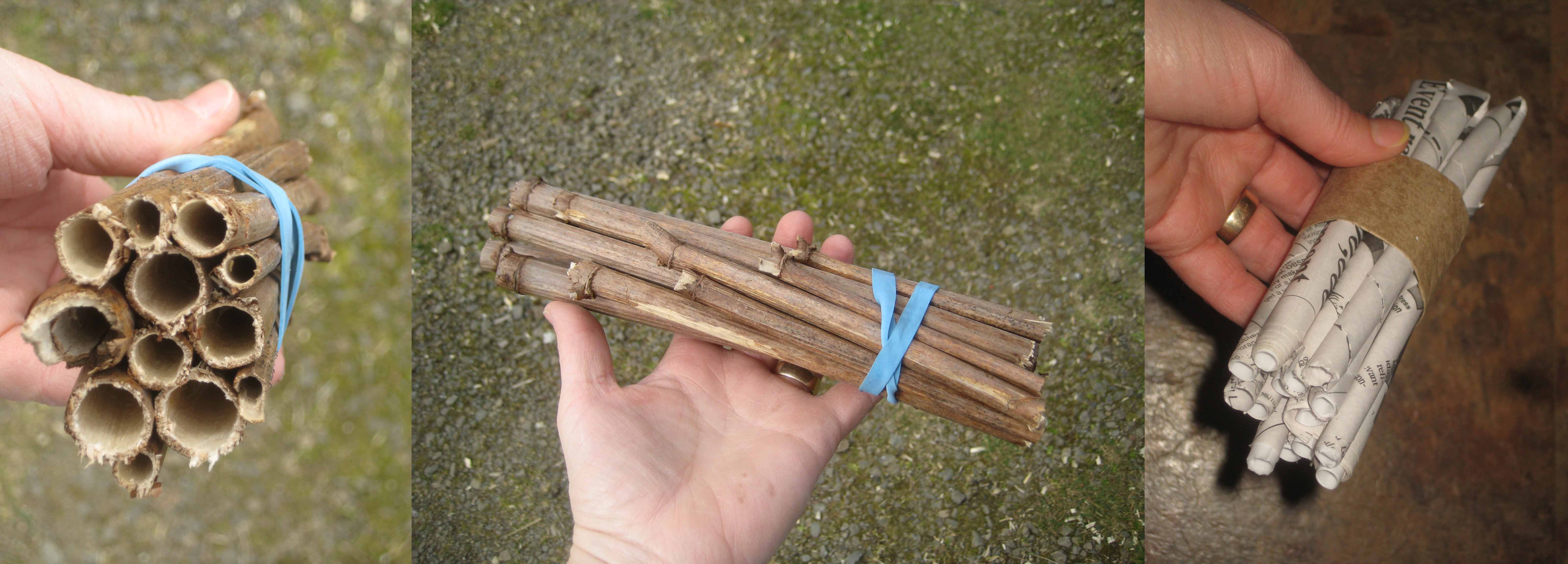For the past several months I’ve been pouring over plans, reviews and anecdotes about different kinds of bee nest blocks. I wanted something that had a proven track record. In the process of my search I found that one also needs to consider the health of the bees.

I had originally planned to create a lovely bee condo like the one pictured above. I quickly found out that these high-density units, although visually appealing and definitely attractive to bees, have the unpleasant side-effect of concentrating parasites and disease.
Because of the high density of animals using these locations, pests and disease are quickly transferred between animals. An example of this is chalkbrood, a genus of fungus with several species among native bees. (All of which are different than the chalkbrood that attacks honeybees.) Here is a description from the Xerces publication Tunnel Nests for Native Bees: “Bee larvae become infested with disease spores through contaminated pollen, either collected from a flower by the mother bee, or accidentally spread when the mother bee emerges from a contaminated nest tunnel.” (Emphasis mine.)

Many sources recommended sanitizing your nest blocks on a regular basis – at least every two years though annually is best. You can do this by running your drill bit through the hole to clear out any remaining debris, then dipping the block into a bleach-water solution. The problem with this method is that you’ll invariably end up destroying some bee larvae. I can’t bear the thought of potentially hurting anyone, so I continued searching for options.

Nest tubes from hollow-stemmed plants are a wonderful alternative – they’re inexpensive and degrade quickly, reducing the chances for build-up of parasites and disease. Lacking natural resources, you can make a fair substitute by rolling no-wax parchment paper around dowels of the tube size you want to provide (different species of bee nest in different size tubes). An outer layer of newspaper gives the tube firmness for less cost than making it out of parchment paper completely. (Don’t just use newspaper as the ink might contaminate the bee larvae.)
What I dislike about these options is that they are more difficult to stabilize – bees prefer nest sites that don’t move in the wind. And in the case of the second option you’ve got to find a way to keep it dry. (Not so easy in coastal Washington!)

Finally I found an option that seemed to take all possible scenarios into consideration. Being a nest block, this solution is easier to mount in a way that eliminates unwanted movement. By lining the nest holes with paper, you can ensure that no larvae are still in the holes when it comes time to clean the block. The block is easier to sanitize because the holes are drilled all the way through the block. And if you are a bee “farmer,” this method also allows you to harvest the bee pupae for sale.
The written directions for this nest box can be found here, and the visual step-by-step instructions can be viewed or downloaded from Author Stream.
Do you have a nest box technique that is better than this one? Let me know! I’m always looking for the best information to share with my readers!
Postscript: Mr. Cane at the USDA-ARS Bee Biology and Systematics Lab reminded me of the bee nest instructions at their site. Although I prefer not to use polyurethane, their instructions for bee nest blocks are very well done. If you look at the links on the left side of the page, you’ll also see instructions for two different kinds of natural nest tubes.